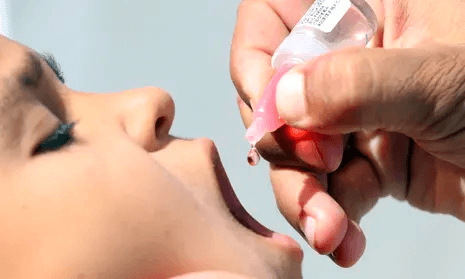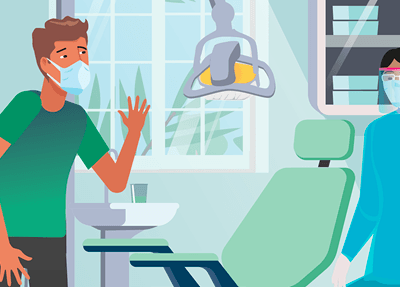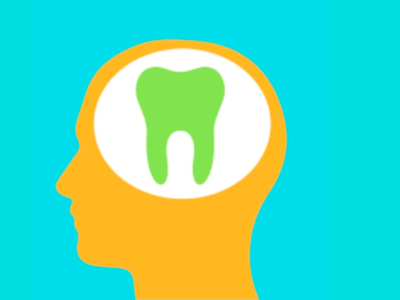All about Poliomyelitis
The words polio (grey) and myelon (marrow, indicating the spinal cord) are derived from Greek. It is the effect of poliomyelitis virus on the spinal cord that leads to the classic manifestation of paralysis. Poliomyelitis or polio is a crippling and potentially deadly infectious disease caused by poliovirus that spreads from person to person invading the brain and spinal cord resulting into paralysis. Humans are the only known reservoir of poliovirus, which is transmitted most frequently by persons having infection.

Poliomyelitis (polio) is a highly infectious viral disease. The virus enters the body through the mouth and multiplies in the intestine. Initial symptoms are fever, fatigue, headache, vomiting, stiffness in the neck and pain in the limbs. One in 200 infections leads to irreversible paralysis. It can strike at any age but mainly affects children under five years of age.
Generally, two basic patterns of polio infection are :
- Minor illness which does not involve the central nervous system (CNS), sometimes called abortive poliomyelitis,
- A major illness involving the CNS, which may be paralytic or nonparalytic
Poliomyelitis generally spreads via the feco-oral route by ingesting contaminated food or water and the oral-oral route. In endemic areas, polioviruses can affect the entire human population. The disease has a seasonal transmission in temperate climates, with a peak occurrence during summer and autumn. 1
Due to unavailability of any cure till date, vaccination is the best way of protection and the only way to control the spread of disease.
Polio cases have decreased by over 99% since 1988, from an estimated 350,000 cases then, to 1997 reported cases in 2006. The reduction is the result of the global effort to eradicate the disease. In 2008, only four countries in the world remained polio-endemic, down from more than 125 in 1988 – Afghanistan, India, Nigeria and Pakistan.2
History of polio in India
In the year 1995, India launched its first nationwide polio immunization campaign. A National Immunization Day is held to immunize all children up to the age of three years. A total of 88 million children immunized. In 1997, The National Polio Surveillance Project (NPSP) was established for poliovirus surveillance. In 1999, type 2 poliovirus was eradicated. Last global case of type 2 polio ws reported in Aligarh, Uttar Pradesh. House-to-house strategy of vaccination drive began.
In 2012, India was removed from the list of polio endemic countries after completing a year of reporting no polio cases, a major milestone in the history of polio eradication.
How to manage patients with poliomyelitis in dental clinic
The disability is not the problem. The accessibility is the problem —–Mohammed Jemni (#TED 2013).
The resilience and fortitude of persons with disabilities inspires us. Under the Accessible India initiative, numerous measures have been taken that ensure there is a positive change in the lives of our Divyang sisters and brothers.
For this, we first have to understand the oral conditions of polio patients, treatment barriers, the concept of diagnostic overshadowing and learn to make the dental clinic accessible to patients with polio and other mobility disorders.
Oral health in patients with polio
Oral conditions: Current research suggests that disabled people and people living with long-term disabling conditions, such as a mental illness or a learning difficulty, have poorer oral health than their non-disabled peers. Broadly speaking, disabled children and adults experience the same common oral diseases and conditions as non-disabled children and adults. There is evidence, however, that they experience poorer outcomes. Poorer oral health outcomes from similar population level experiences of disease suggest that the problem may lie within dentistry itself and the barriers encountered by disabled people when using dental services, rather than in the nature of the impairment per se.
Treatment barriers: Research suggests that disabled people face a range of barriers, such as inaccessible buildings or inflexible appointments, when using health services, causing dissatisfaction and potentially deterring health service use. Barriers relating to the dental profession include
- a lack of training specific to the requirements of the job poor communication skills
- high staff turnover which results in a lack of trust and continuity of care
- a lack of time and resource
- cramped and inappropriate clinical environments
- a lack of funding.
Diagnostic overshadowing: This is a common problem with disabled patients: diagnostic overshadowing. Diagnostic overshadowing was first highlighted in the medical literature in 1982 and can be described as a concept whereby symptoms of physical ill health are mistakenly attributed by healthcare professionals to either a mental health or behavioural problem, or as being inherent in the person’s learning disability. This can lead to a failure to diagnose and treat appropriately. Hence, it must be avoided.
In context to oral health / dentistry this can be simply understood by this hypothetical clinical scenario: a disabled person like one with poliomyelitis, visits the dentist with a chief complaint of pain in the TM joint while chewing food. If the intra-oral examination is normal, then the dentist may tend to ignore and overlook the examination of the masticatory muscles by considering that such patients may have generalized muscle weakness.
Making your dental clinic accessible for patients with mobility impairments
Accessibility design for dental clinic 3:
Reception
- The reception should be close to the entrance with minimal internal and external noise.
- Reception desks should be two tier type to serve both standing as well as in wheel chair patients.

- Those persons who cannot stand for long, should be provided chairs to sit even while enquiring at the reception counter.
- There should be at least reasonable space for wheelchair mobility and turning in almost all parts of the centre.

Writing table or counter
- For a person on wheelchair there should be enough knee clearance and toe clearance spaces under the table or counter
- The space of 230 mm height above the finished floor surface is toe clearance and from 230 mm to 800 mm is called knee clearance space.
- The top of the table/counter should be between 750 mm and 900 mm high with knee space 750 mm wide and 480 mm deep.

Consent forms & payments
- Content of written material should be effectively communicated to persons who can’t read the material.
- The currency notes or coins should be handed individually and counted.
- Facility of payment using mobile apps should be provided.
- If payment is made by cards, the cards should be given in hand of the person and should not be left on the counter.
Washrooms
- The signs, symbols and pictograms for toilets are required to be at a height of 1500 mm from floor.
- The door width should not be less than 900mm and the door should be opening with swing into the turning space in the toilet.
Conclusion
As a responsible citizen of this country lets make our clinic and our world adequately optimized to accomodate these divyang people .
“We see a person’s disability with our eyes. But our interaction tells us the person usually has an extra power. Then I thought, in our country, instead of using the word ‘viklaang’, we should use the term DIVYANG. These are people who have a limb or several limbs with divine powers which we don’t have”. – Shri Narendra Modi, Prime Minister of India, Mann ki baat. 27 Dec 2015
References
1. National Health Portal of India
2. Tak M, Nagarajappa R, Sharda A, Asawa K, Tak A, Jalihal S. Comparative assessment of oral hygiene and periodontal status among children who have Poliomyelitis at Udaipur city, Rajasthan, India. Med Oral Patol Oral Cir Bucal. 2012 Nov 1;17(6):e969-76. doi: 10.4317/medoral.17658. PMID: 22549671; PMCID: PMC3505718.
3. Harmonized guidelines & standards for universal accessibility in India by CPWD 2021



















Comments